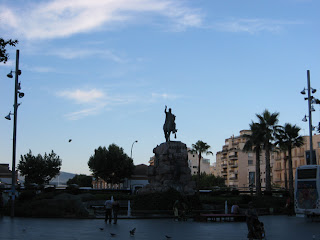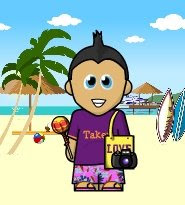Palma is quite a big city and it is arranged in a peculiar way, due to the presence of the sea. This means that you need to plan carefully where you want to live, as even few hundred meters away can make a big difference.
The above is a general map of Palma (click to enlarge), where I have highlighted some important info.
All the area included between the Old Town and the Circumvalación de Palma, is actually where most of Palma’s inhabitants. Although this is not the city centre, these areas are full of life and businesses: you’ll find plenty of shops, restaurants, offices and services, even more than in the old city. This is, by my opinion, the best place to live in Palma, if you have a car or if you don’t mind using public transport.
Rent is cheaper here and you can find lots of new flats, you have plenty of shops around your house and can just go out with your flipflops and so some grocery shopping next door. The advantage is also that most of the shops offer fresh food and the prices are consistently lower than in the city centre.
PLAZA DE ESPAŇA: as I described in a previous post (
Palma de Mallorca – how to get there), this is the place where you can find all the connection inside and outside the city. Along the road you have all the bus stops for all destinations; while underground (under the park) you find the train and coach station. From here you can reach all the different town on Mallorca
BEACHES: If you have chosen Palma for the sea and the beaches, well, here comes a bit of a disappointment: there are actually only two beaches which can be considered belonging to Palma, and those are the two highlighted on the map.
The closest one is just at the end of the seaside walk, it’s a free beach so you can lay down wherever you want, but don’t expect to find any refreshment or any kind of service: bring along your towel as well as something to eat or drink, as you won’t find a bar or a shop for miles.
The good news is that you can simply walk there as it’s not that far from the city centre, or you can take the bus. It’s not very crowded even at weekends and there is even a lifeguard during the day to watch over your security. Furthermore, the sea in front of the beach is enclosed by a system of boas, so windsurfs and similar are forbidden. This allows you to swim freely without fearing some sort of unexpected and unpleasant encounter.
The other beach is Cala Major, but you definitely need to get on a bus to get there, or simply have your own mean of transport. The beach is not really big and is surrounded by resorts, so it becomes a bit crowded during July and August. The advantage is that here you can find plenty of services and bars, so, if you prefer to be served, this is your ideal place.
The sea here is nice, calm and the water is clean.
CLUBS-HOTEL-GAY VILLAGE: This is the amusement park of Palma, along these two roads, Gabriel Roca and Joan Mirò, you have a display of bars, restaurants, pubs and clubs (including the famous Pashà Club) and hotels one after the other, so the only difficulty is choosing where to go.
While Avenida de Gabriel Roca is a bit posher and tourist oriented, the scene on Avenida Joan Mirò is defined by the massive presence of locals. Still here you can find every kind of club and exotic cousine, but at more reasonable prices. This borough is known with the name of Gomila and hosts the ‘so called’ gay village, which consist in a bunch of bars and a couple of clubs, and is mainly crowded with local guys and girls.
SEASIDE RESORTS: this is a sort of small seasonal village which life revolves exclusively around tourists and the sea. So I would not live there, unless you want to stay in Palma only in the summer days, as in winter is almost deserted. It’s a small instalment, with just basic services, so, if you need anything, you still need to get your car or jump on a bus and go to Palma anyway.






 Clearly, a bench
Clearly, a bench offices
offices












